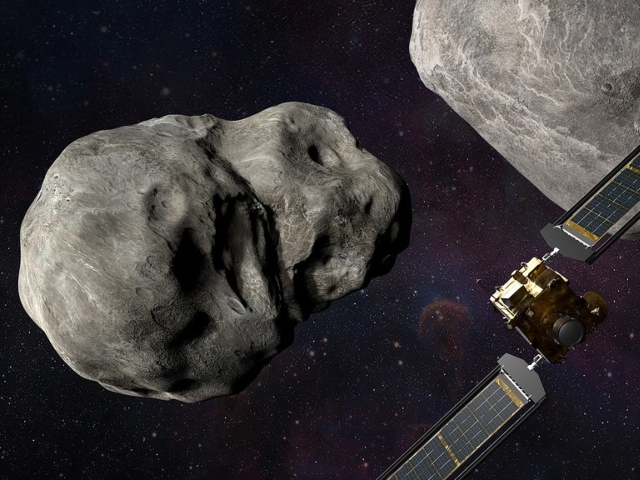[imagesource:flickr]
When NASA’s DART spacecraft intentionally slammed into the tiny asteroid Dimorphos in 2022, it created the first human-made meteor shower known as the Dimorphids, a new study has found.
In order to conduct an in-depth assessment of asteroid deflection technologies for planetary defence, the space agency designed the Double Asteroid Redirection Test, or DART, to see if a spaceship colliding with an asteroid at 6.1 kilometres per second would be sufficient to alter the trajectory of a celestial object in space.
Neither Dimorphos nor the larger space rock it orbits, known as Didymos, pose a danger to Earth and NASA reckoned it would be the perfect target for their test. It sounded good on paper so they let rip.
Now, after nearly two years of monitoring the impact’s aftermath with ground-based telescopes, astronomers discovered that the DART spacecraft was successful in altering Dimorphos’ orbit, causing the little asteroid to take 32 to 33 minutes to complete one revolution around Didymos. Hooray for science.
But scientists have now estimated that the intentional collision generated more than 1 million kilograms of rocks and dust, and they’re not entirely sure where it will all go.
New research however suggests fragments of Dimorphos will arrive in Earth and Mars’ neighbourhood within one to three decades, with the possibility that some debris will reach the red planet within seven years, and more worryingly, debris could also reach Earth’s atmosphere within the next 10 years.
“This material could produce visible meteors (commonly called shooting stars) as they penetrate the Martian atmosphere, and once the first pieces reach Mars or Earth, they could continue to arrive intermittently and periodically for at least the next 100 years, which is the duration of our calculations.”
Before heading to your bunker, it’s important to note that the individual pieces are relatively small, ranging from sand grain-sized particles to fragments similar in size to smartphones, so none of it poses a risk to Earth.
“They would disintegrate in the upper atmosphere through a process known as ablation, caused by friction with the air at hypervelocity. There is no possibility of a Dimorphos material reaching Earth’s surface.”
The study authors consider the possibility of the Dimorphids meteor shower reaching Earth unlikely, but they can’t rule it out. And if it did occur, it would be a small, faint meteor shower.
“These meteors would be slow-moving, with peak activity expected in May, and primarily visible from the southern hemisphere, seemingly originating from near the Indus constellation.”
Ejected debris was expected from the impact, but the possibility of material reaching Earth or Mars could only be calculated after the collision, said study coauthor Michael Küppers, a planetary scientist at the European Space Astronomy Centre.
“Personally, initially I was surprised to see that, although the impact happened close to Earth (at about an 11-million-kilometer distance), it is easier for the impact ejecta (debris) to reach Mars than to reach Earth,” Küppers said by email. “I believe the reason is that Didymos crosses the orbit of Mars, but stays just outside the orbit of Earth.”
It’s not uncommon for particles from near-earth asteroids to reach Earth, such as asteroid Phaethon, which is responsible for the Geminid meteor shower, so we will repeat: There will be no Morgan Freeman speeches on TV and Frodo won’t be outrunning a tsunami on his neighbour’s motorcycle. Probably not.
Future observations will help researchers refine their measurements of the debris and determine how quickly it is moving to calculate the expected meteor activity.
[source:cnn]





